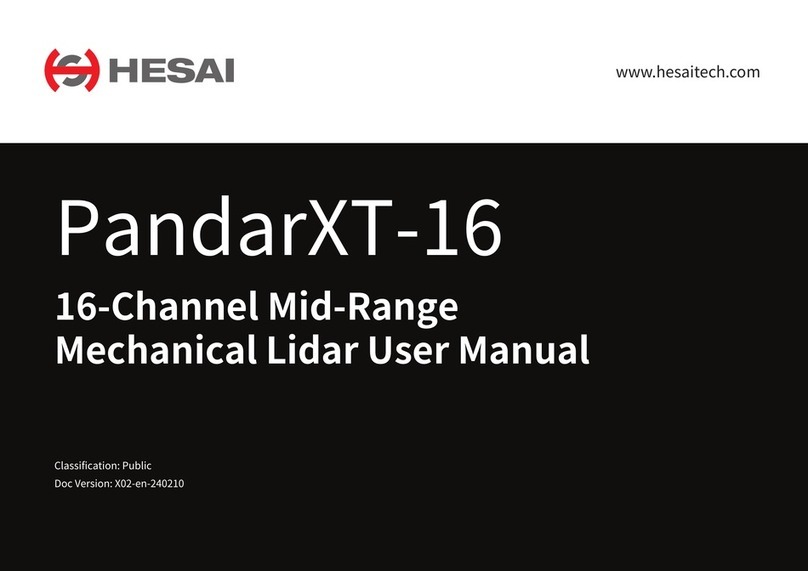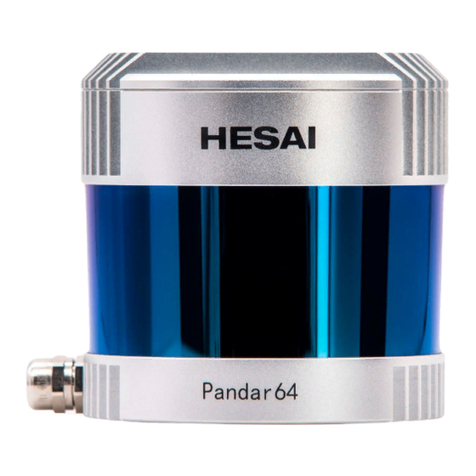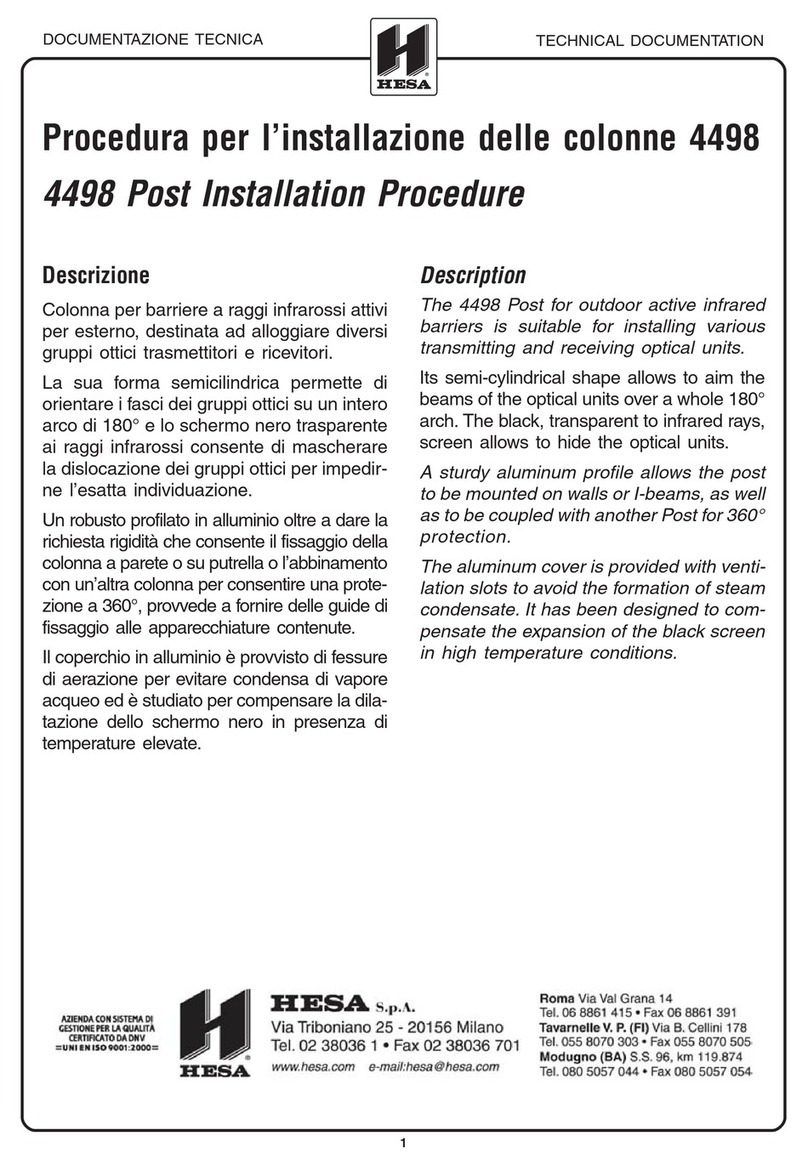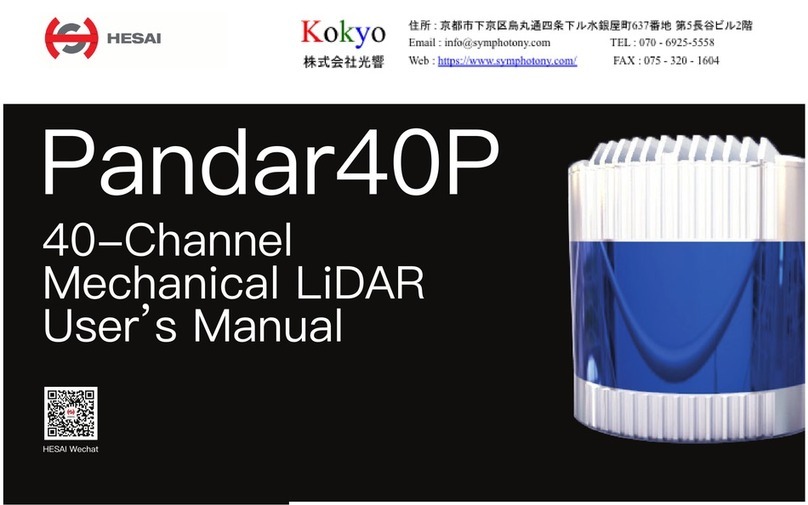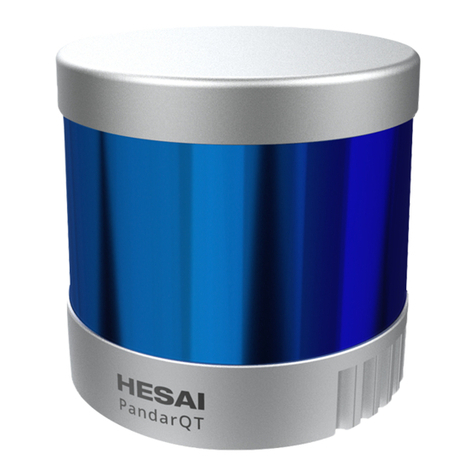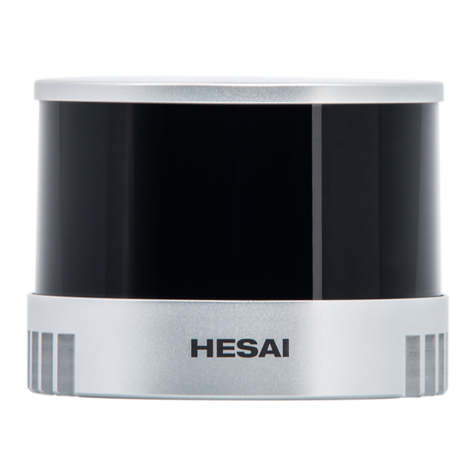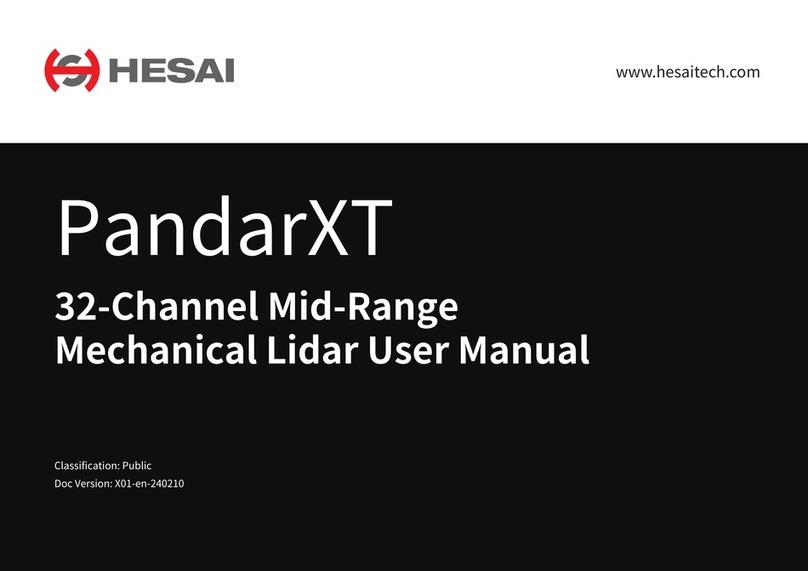
Specifications
1.2
Scanning Method Mechanical Rotating
Channel 20
Wavelength 905 nm
Measurement Range 0.3 m to 200 m (at 10% reflectivity)
Data Points Generated Single Return Mode: 360,000 points per second
Dual Return Mode: 720,000 points per second
Frame Rate (Configurable) 10 Hz,20 Hz
Returns (Configurable) Single and Dual Returns (Strongest, Last)
Laser Class Class 1 Eye Safe
Measurement Accuracy ±5 cm (0.3 m to 0.5 m),±2 cm (0.5 m to 200 m)
FOV (Horizontal) 360°(default)
Angular Resolution (Horizontal)
* Pandar20A and Pandar20B share the same specifications, except for the FOV (Vertical) and Angular Resolution (Vertical). Please see Appendix I for detailed
vertical angular resolution. Specifications are subject to change without notice.
Table 1.1 Prototype Specifications of Pandar20A/B
0.2° (10 Hz), 0.4° (20 Hz)
Clock Source GPS/PTP
PTP Clock Accuracy ≤1 μs
PTP Clock Drift ≤1 μs/s
Weight 1.408 kg
FOV (Vertical) Pandar20A:33° (-25° to +8°)
Pandar20B:22° (-19° to +3°)
0.33° Minimum Angular Resolution
(Vertical)
Data Transmission Method UDP/IP Ethernet (100 Mbps)
Data Outputs UDP: distance, azimuth angle, intensity
Power Consumption 16 W
Enclosure Level IP67
Operating Voltage 9 V to 48 V
Operating Temperature -40℃ to +65℃
Dimensions Height: 104.70 mm; Top Diameter: 116.00
mm; Bottom Diameter: 115.00 mm
-05-
